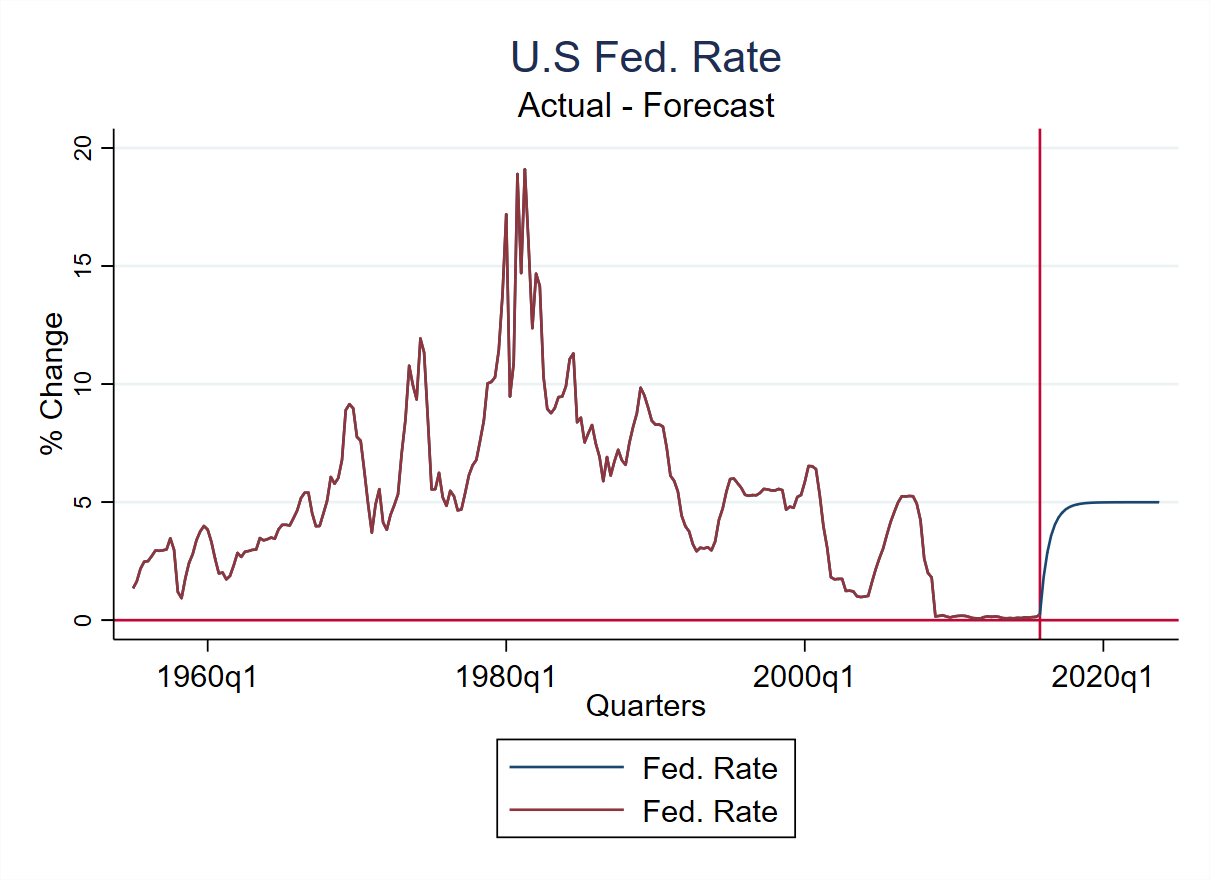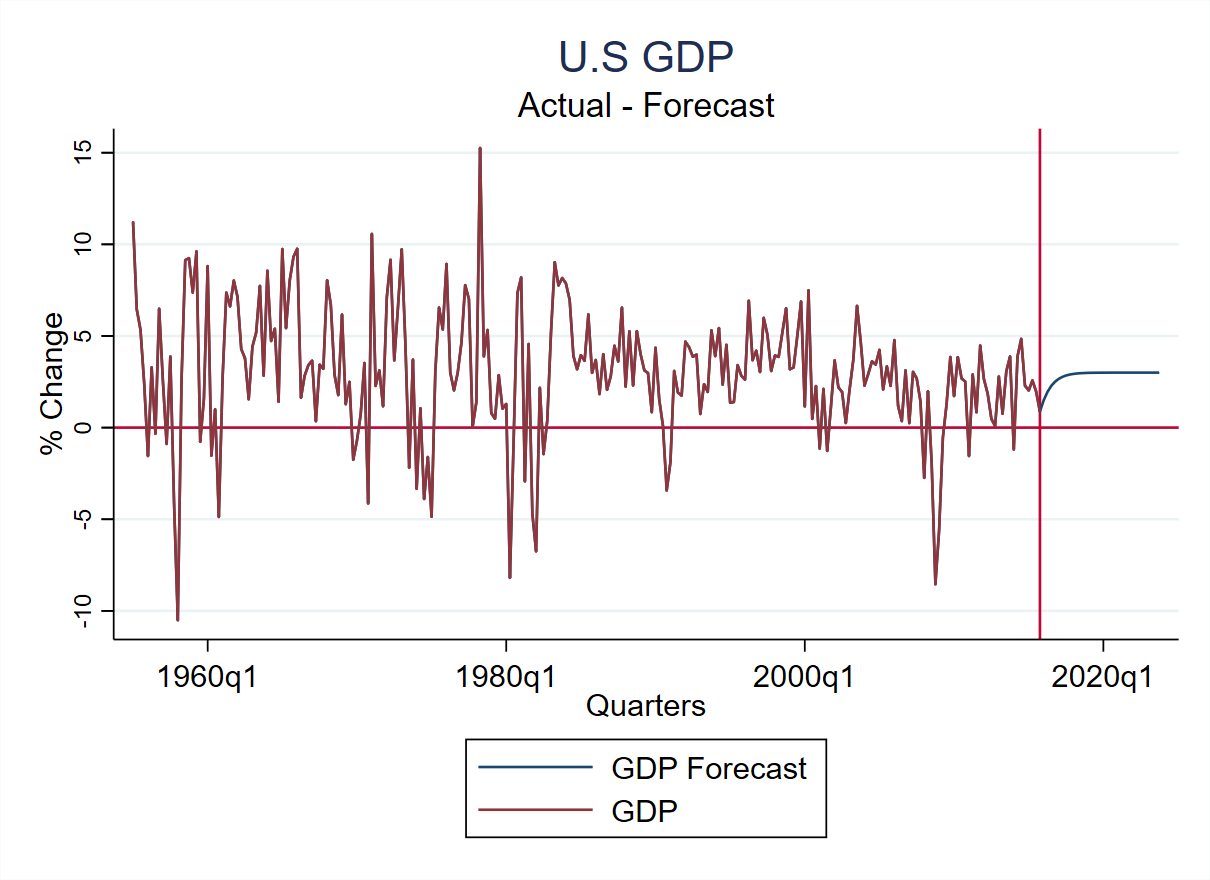
New Keynesian DSGE Model in STATA
The Material Includes:
- Slides
- STATA Do File
- Extract of the book where we source the model (book is public).
- Videos
- Dataset


The Material Includes:
Continue advancing in Dynamic Stochastic General Equilibrium (DSGE) modeling with our comprehensive package. Dive into the practical application of the New Keynesian DSGE model with Stata, featuring essential resources such as slides, datasets, a mathematical model book, Stata DO File, and two explanatory videos.
Led by Juan D'Amico, an experienced economist with profound expertise in modeling and Stata, this package delves into the practical implementation of macroeconomic theory outlined in Carl Walsh's renowned book "Monetary Theory and Policy."
While we won't manually solve the equations (the step-by-step derivation is covered in Walsh's textbook, with relevant chapters included in the course materials), we will thoroughly analyze each equation, dissecting how variables and parameters interact.
Through these resources, you'll learn to translate these equations into Stata code, produce impulse response functions, and generate out-of-sample forecasts.
Key topics covered include:
Whether you're a researcher, economist, or student, this package offers invaluable insights and practical skills to advance your proficiency in macroeconomic modeling using Stata.
Don't miss this opportunity to enhance your expertise and unlock the full potential of the New Keynesian DSGE model in Stata. Get your package now!
The New Keynesian DSGE model is underpinned by three fundamental equations, each crucial for understanding macroeconomic dynamics. Firstly, the Phillips curve embodies the trade-off between inflation and real economic activity, capturing how changes in economic output affect price levels. Secondly, the IS curve depicts the relationship between output and interest rates, reflecting the equilibrium in the goods market and the impact of monetary policy on economic activity. Lastly, the Taylor rule outlines the central bank's reaction function, dictating how it adjusts the nominal interest rate in response to deviations of inflation from its target and output from its potential. Mastery of these equations is paramount for grasping the intricate interplay between monetary policy, inflation dynamics, and output fluctuations, providing a solid foundation for analyzing economic phenomena and guiding policy prescriptions. Through our package, participants will gain comprehensive insights into these equations, learning not only how to estimate them in Stata but also how their variables and parameters influence one another, facilitating a deeper understanding of macroeconomic theory and practice.

Juan D'Amico is an economist. He holds a degree and a master's in Economics. He has held positions in both the private financial sector and the public economic sector. In the academic sector, he has served as a teaching assistant for courses such as Intro to Statistics, Advanced Statistics, Dynamic Macroeconomics, Advanced Microeconomics, and Game Theory. Juan also teaches on his YouTube channel "JDEconomics," which focuses on applied time series analysis and forecasting, reaching over 40,000 views worldwide on a monthly basis. His work has received positive feedback and high recommendations from diverse students around the globe.
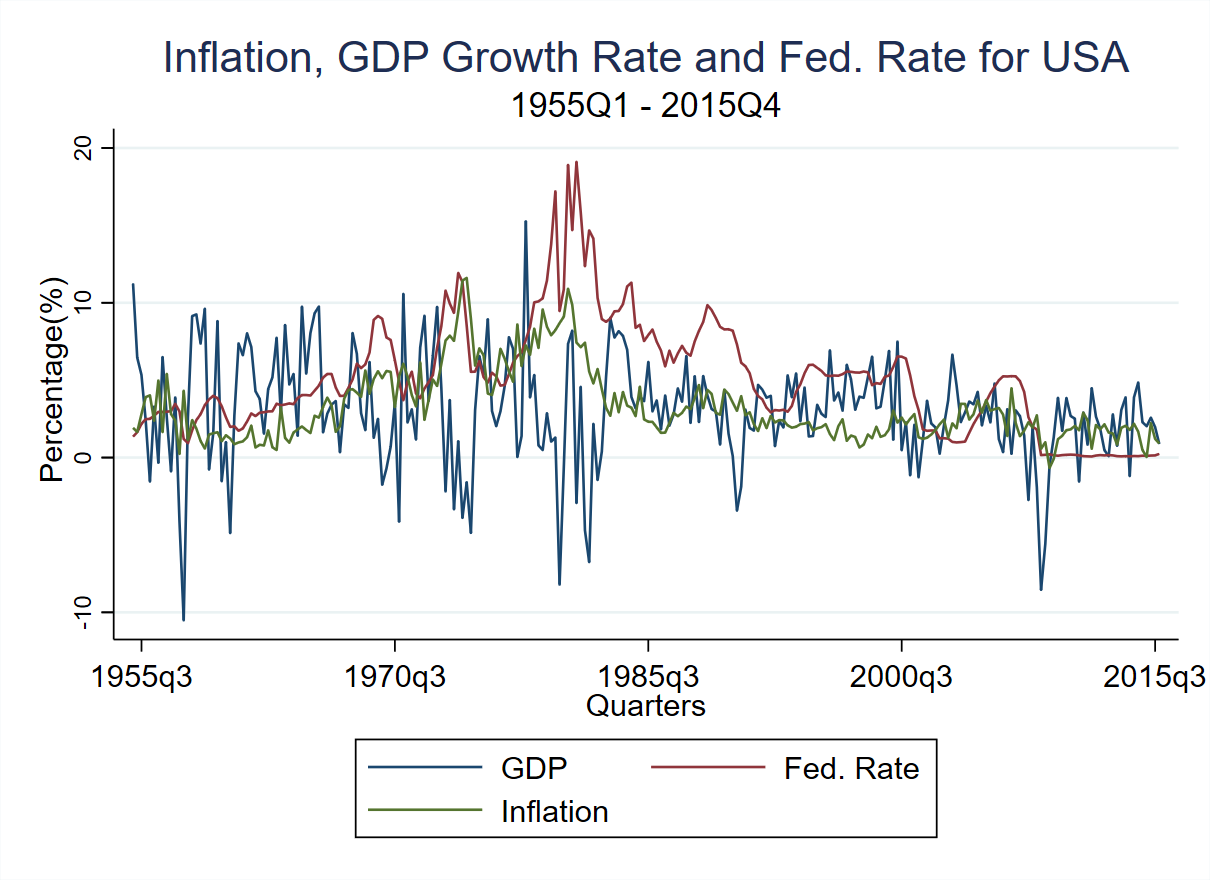
Fed Rate, Inflation and GDP growth are the variables in the model. See how they interact with each other in a general equilibrium frame,
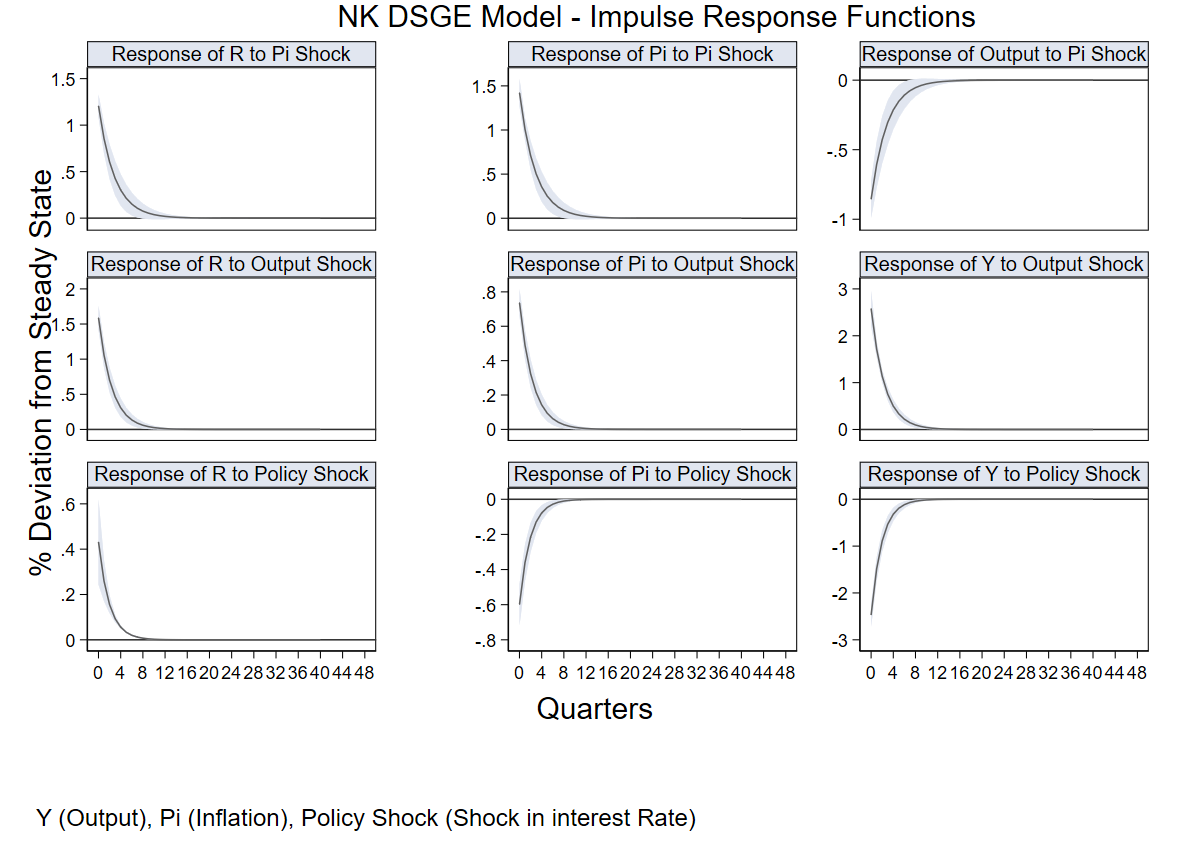
See how the variables respond to shocks in the model. What happens with inflation, GDP growth or the Fed Rate when there are shocks in the model?
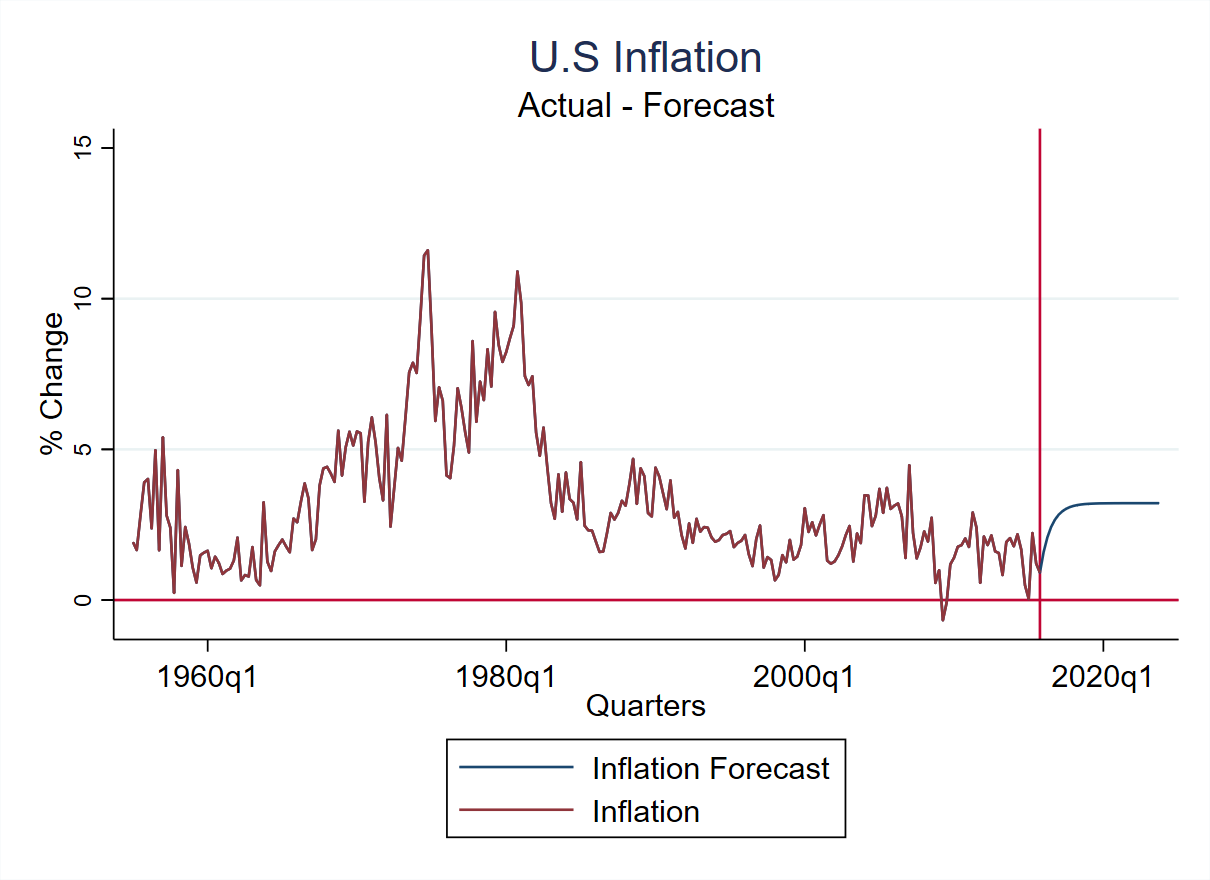
In this package I show you how to produce out of sample forecasts for the three endogenous variables: Inflation, GDP Growth and the Fed. Rate


